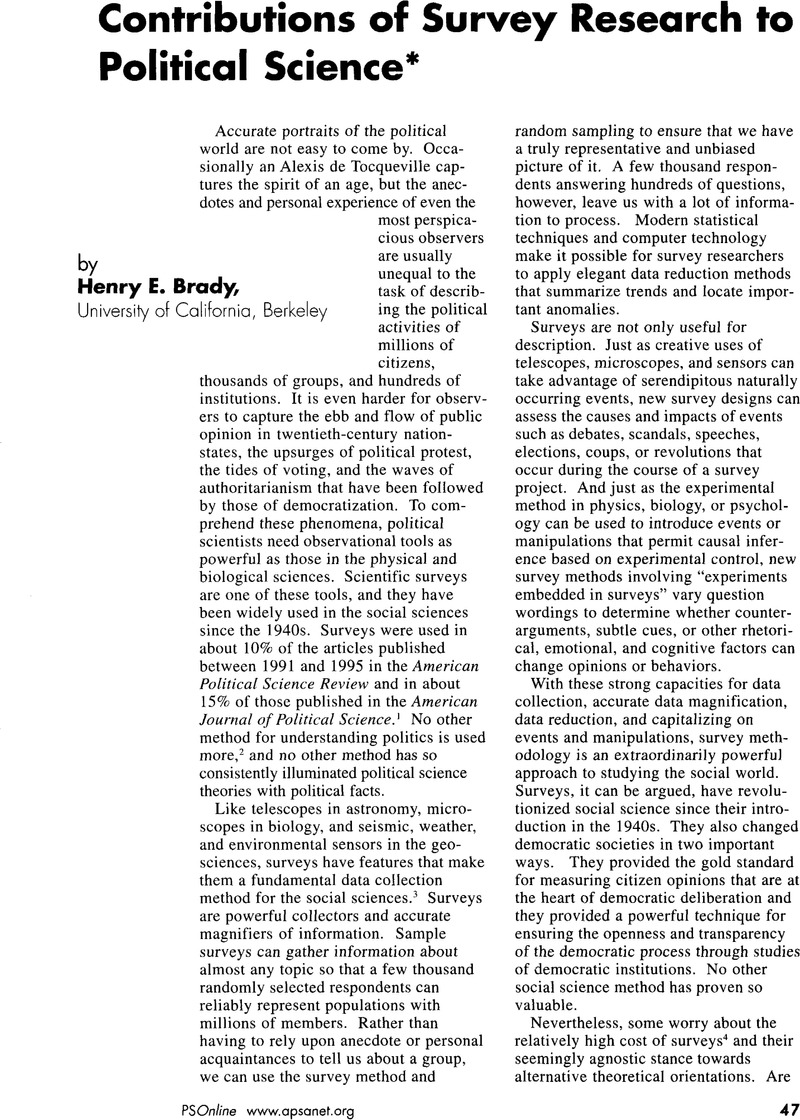Crossref Citations
This article has been cited by the following publications. This list is generated based on data provided by Crossref.
Stephenson, L. B.
and
Crete, J.
2011.
Studying Political Behavior: A Comparison of Internet and Telephone Surveys.
International Journal of Public Opinion Research,
Vol. 23,
Issue. 1,
p.
24.
Farrall, Stephen
Priede, Camilla
Ruuskanen, Elina
Jokinen, Anniina
Galev, Todor
Arcai, Michela
and
Maffei, Stefano
2012.
Using cognitive interviews to refine translated survey questions: an example from a cross-national crime survey.
International Journal of Social Research Methodology,
Vol. 15,
Issue. 6,
p.
467.
Erişen, Cengiz
Erişen, Elif
and
Özkeçeci-Taner, Binnur
2013.
Research Methods in Political Psychology.
Turkish Studies,
Vol. 14,
Issue. 1,
p.
13.
Trihartono, Agus
2013.
A Vox Populi Reflector or Public Entertainer? Mass Media Polling in Contemporary Indonesia.
Procedia Environmental Sciences,
Vol. 17,
Issue. ,
p.
928.
Smith, Tom W.
2018.
Advances in Comparative Survey Methods.
p.
13.
Glinka, Kamil
2020.
The Urban Regime Theory in Political Science Research — The Possibilities and Limitations of Implementation.
Polish Political Science Review,
Vol. 8,
Issue. 2,
p.
1.
AYDAŞ, İrem
MORAL, Mert
and
TOSUN, Yasemin
2022.
An Examination of Election Polls in Turkey From the Total Survey Error Paradigm Perspective.
Pamukkale University Journal of Social Sciences Institute,
Pasek, Josh
and
T. Moore, Steven
2025.
The Cambridge Handbook of Implicit Bias and Racism.
p.
262.
2025.
The Cambridge Handbook of Implicit Bias and Racism.
p.
169.



